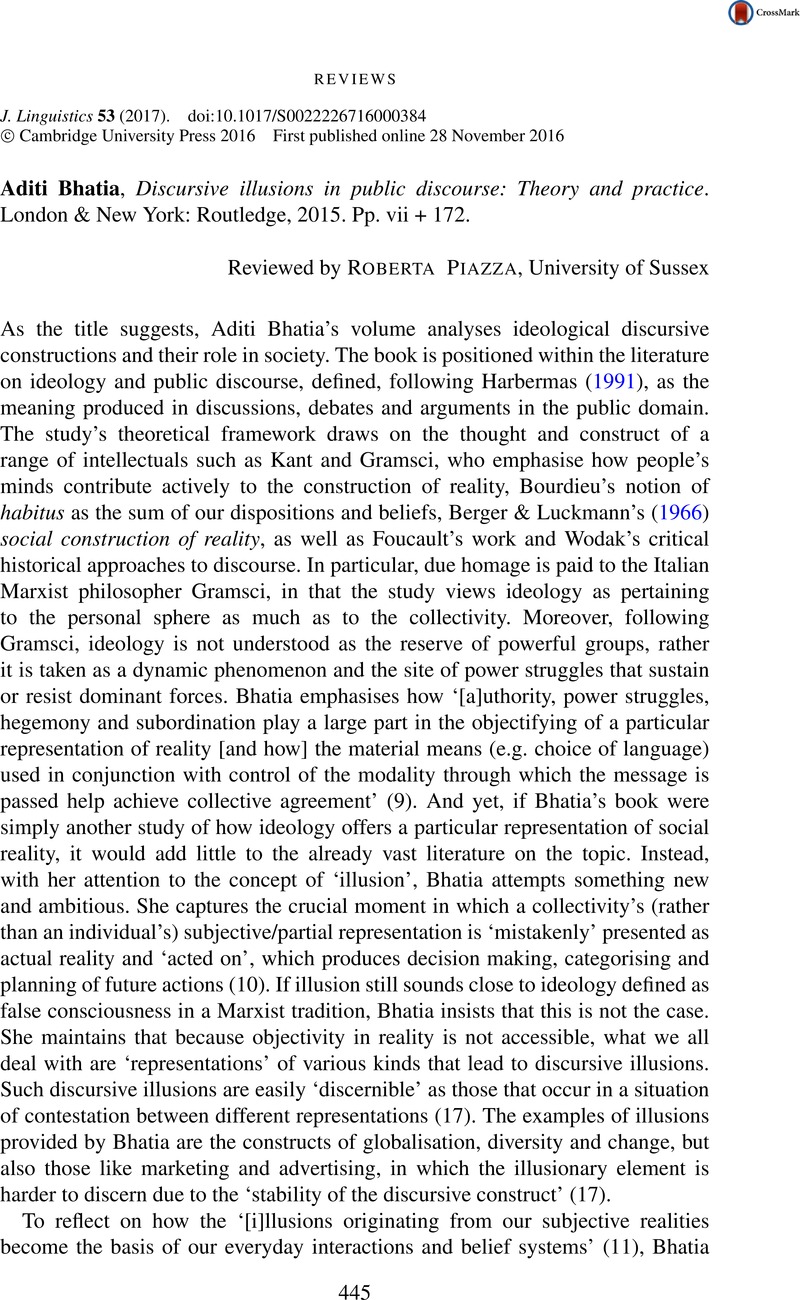No CrossRef data available.
Article contents
Aditi Bhatia, Discursive illusions in public discourse: Theory and practice. London & New York: Routledge, 2015. Pp. vii + 172.
Review products
Aditi Bhatia, Discursive illusions in public discourse: Theory and practice. London & New York: Routledge, 2015. Pp. vii + 172.
Published online by Cambridge University Press: 28 November 2016
Abstract
An abstract is not available for this content so a preview has been provided. Please use the Get access link above for information on how to access this content.

Information
- Type
- Reviews
- Information
- Copyright
- Copyright © Cambridge University Press 2016
References
Berger, Peter & Luckmann, Thomas. 1966. Social construction of reality. New York: Anchor Books.Google Scholar
Charteris-Black, Jonathan. 2005. Politicians and rhetoric: The persuasive power of metaphor. New York: Palgrave Macmillan.Google Scholar
Cialdini, Robert. 1997. Interpersonal influence. In Shavitt, Sharon & Brock, Timothy (eds.), Persuasion: Psychological insights and perspectives, 195–217. Boston, MA: Allyn & Bacon.Google Scholar
Gal, Susan & Irvine, Judith. 1995. The boundaries of language and disciplines: How ideologies construct differences. Social Research
62.4, 967–1001.Google Scholar
Harbermas, Jürgen. 1991. The structural transformation of the public sphere: An inquiry into a category of burgeois society. Cambridge, MA: MIT Press.Google Scholar
Leudar, Ivan & Nekvapil, Jacqueline. 2011. Practical historians and adversaries: 9/11 revisited. Discourse & Society
22.1, 66–85.Google Scholar
Linell, Per & Thunqvist, Daniel P.. 2003. Moving in and out of framings: Activity contexts in talks with young unemployed people within a training project. Journal of Pragmatics
35, 409–434.Google Scholar
Wodak, Ruth. 2002. The discourse historical approach. In Wodak, Ruth & Meyer, Michael (eds.), Methods of critical discourse analysis, 63–94. London: Sage.Google Scholar


